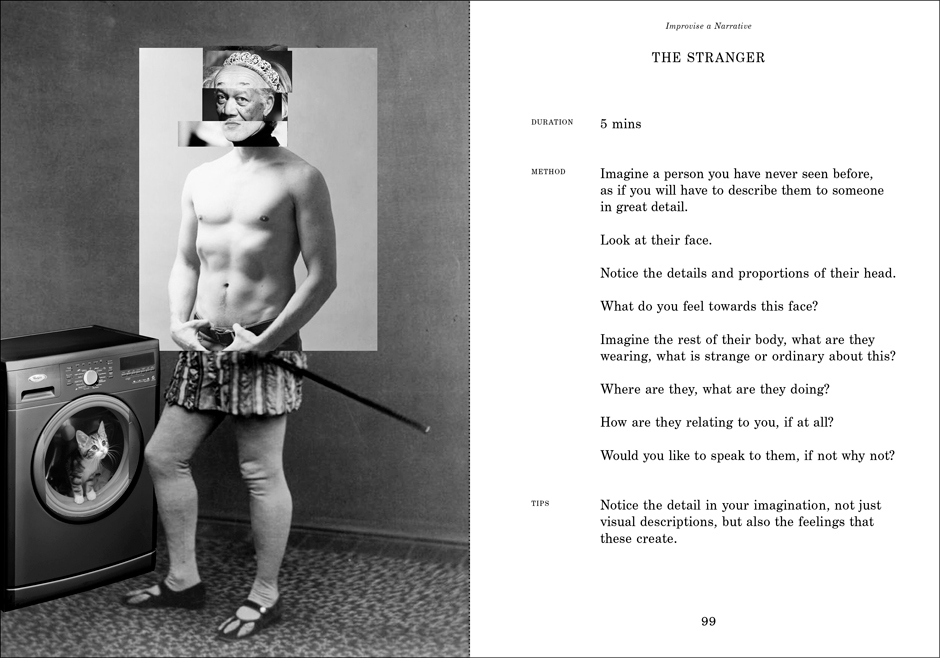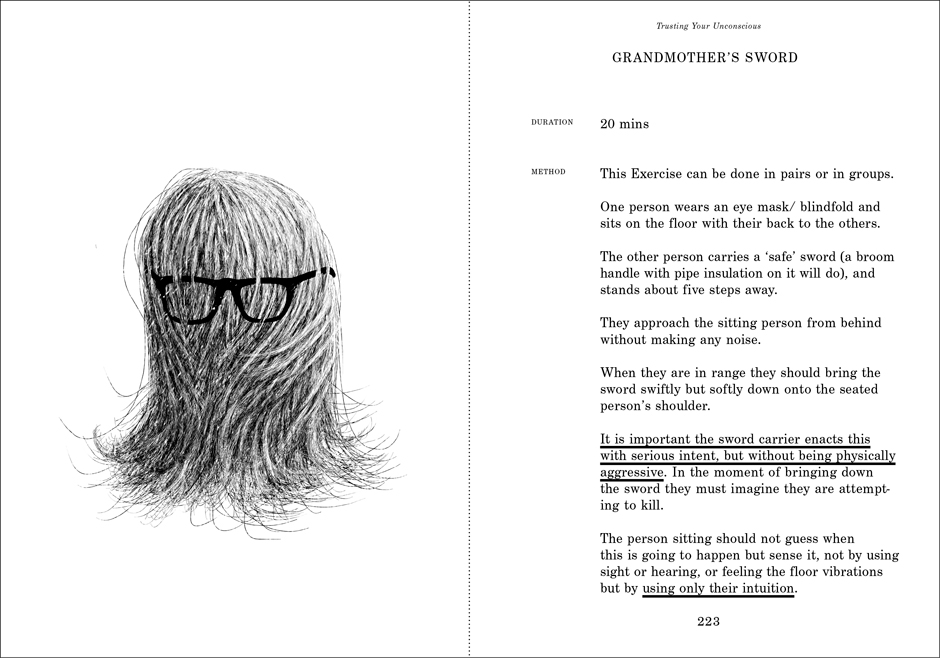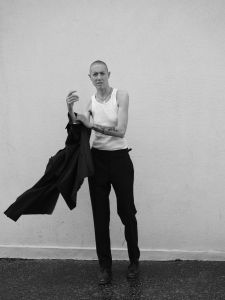The artist talks Elliot Watson through his new book, offering shamanic advice and exercises to unleash the power of the imagination

“Nobody entirely trusts their imagination to make important decisions,” Marcus Coates states, “because that’s too close to madness for us.” As I contemplate the artist’s claim, I quickly realise he has told a sad truth. Not since childhood have I allowed my imagination to fuel anything more significant than collections of drawings in the margins of notebooks. “I’m frustrated living in this over rational society,” he protests. “If we look to our imagination for help it’s only for non-essential decisions. It needs to play a more critical part in our lives.”
Coates is an advocate for throwing off the rational in favour of the imagination, which has its feet planted firmly in the subconscious, so often cut adrift when decision-making is actioned. In his book, UR… A Practical Guide to Unconscious Reasoning, Coates delivers instruction on how to use the imagination to find answers to life’s questions, both the life changing and the everyday. And the source of his methodology is drawn from the shamanic rituals and practices of indigenous cultures.Though highly respected and revered within their respective communities, these rituals are oft dismissed as absurd and obsolete when imported into the hyper-rational, technologically and statistically-obsessed West. But for Coates, they hold the key to understanding and making truly informed decisions.
“When a solution comes from inside you, it feels much more like you own, not like it was just borrowed from somewhere else,” he says of the awakening experienced from these shamanistic rituals.
Outlined in his book, which acts as an instruction manual of sorts, exercises take the individual on a physical and psychological journey into the minds’ antipodes, and, upon their return, call on the reader’s ability to interpret the information discovered to enact self-awareness. “If you can establish a relationship with that, , it can be very pragmatic. It can be very powerful. It’s about giving that information a real significance. The way we don’t normally do in this society. That’s interesting.”
 “The key to all these things is imagination and being able to use and trust it; being very fluid with it and going into it very easily and being able to come out of it very easily,” he explains. Having worked with senior health officials in City Hall to members of the general public outside of Bethnal Green tube station, Coates believes that there is no scale of problem that cannot be in some way alleviated by use of the imagination. It’s a theory that is founded in the origins of rituals themselves: “This isn’t empty, this is essential. It’s about survival in some contexts. For some people it’s about understanding the forest, about understanding how and when to hunt. There’s a criticality to something that here we may perceive as art. This is about bringing it in to peoples’ lives and using it in a practical way.””When you’re in an imagined world, you’re noticing things, you’re reacting to what’s going on around you. You have to learn what is significant, learn what to bring back with you and how to verbalise that and apply it to your situation. It’s not a world of language: it can be hard to communicate what you have seen. But accessing that information and finding out how to communicate it – the book can help you with that.”
“The key to all these things is imagination and being able to use and trust it; being very fluid with it and going into it very easily and being able to come out of it very easily,” he explains. Having worked with senior health officials in City Hall to members of the general public outside of Bethnal Green tube station, Coates believes that there is no scale of problem that cannot be in some way alleviated by use of the imagination. It’s a theory that is founded in the origins of rituals themselves: “This isn’t empty, this is essential. It’s about survival in some contexts. For some people it’s about understanding the forest, about understanding how and when to hunt. There’s a criticality to something that here we may perceive as art. This is about bringing it in to peoples’ lives and using it in a practical way.””When you’re in an imagined world, you’re noticing things, you’re reacting to what’s going on around you. You have to learn what is significant, learn what to bring back with you and how to verbalise that and apply it to your situation. It’s not a world of language: it can be hard to communicate what you have seen. But accessing that information and finding out how to communicate it – the book can help you with that.”
UR… A Practical Guide to Unconscious Reasoning is out now, published via Book Works and Create. Click for more information. Images courtesy of the artist, and publishers




